#fl 1790
Explore tagged Tumblr posts
Text



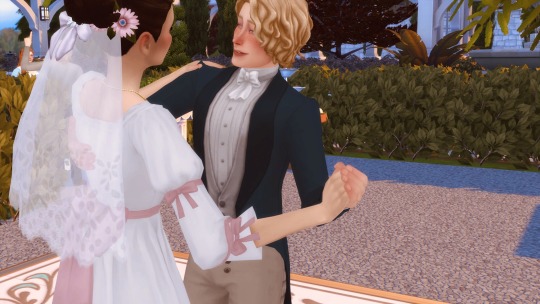


The wedding of Caroline Fletcher and Charles Davenport (in which I got way too invested)
39 notes
·
View notes
Text


Love this ancient 1790 stone house in Phoenixville, PA. Look at the way they covered over the windows with curved sun room glass. 3bds, 2ba, 2,010 sq ft, $540k.


Love the original stone fireplace and sunken living room. Those windows sure bring in lots of sun.

I can't get over how they adapted these windows- you see MCM homes with '70s sun room additions, but they just used pieces. Here, they even built a bench and fitted it with shades.


This is different. A shuttered window looking over the living room. I can't tell what it is, but it has curved walls and built-ins. Terrible photos.


This looks like a combination sitting/dining room as you enter the front door.

The kitchen has an original stone wall and the cabinetry matches the wood in the home, but it's dated. It's okay, though.

Half bath on the main floor.


A couple of steps down to this room- look at the top of the curved window. I think that this is the primary bedroom and it has a door to a terrace.

The full bath looks roomy. Of course, it's a stupid half photo.

The stairs come up from the sitting room to this to open, airy 2nd fl. of bedrooms.

The bedrooms are big and bright. They have cute original built-ins and this one has a cedar closet.

The original walls slope showing the original size of the rooms, so the owners added higher ceilings. Look at how they left a small original window, though.

They must've lined this closet with cedar.


The 3rd bedroom is also very light and has a nice big closet.

There's the terrace that the primary bedroom opens to, and below there's a nice patio.


The 2 car garage has original doors.

This is a great feature- a whole house generator that takes over in case the power goes out.

Cute little birdhouse, too.


What a lovely historic home on a pretty .50 acre lot.
https://www.zillow.com/homedetails/105-Hoffecker-Rd-Phoenixville-PA-19460/9152462_zpid/
355 notes
·
View notes
Text
[T]he Dutch Republic, like its successor the Kingdom of the Netherlands, [...] throughout the early modern period had an advanced maritime [trading, exports] and (financial) service [banking, insurance] sector. Moreover, Dutch involvement in Atlantic slavery stretched over two and a half centuries. [...] Carefully estimating the scope of all the activities involved in moving, processing and retailing the goods derived from the forced labour performed by the enslaved in the Atlantic world [...] [shows] more clearly in what ways the gains from slavery percolated through the Dutch economy. [...] [This web] connected them [...] to the enslaved in Suriname and other Dutch colonies, as well as in non-Dutch colonies such as Saint Domingue [Haiti], which was one of the main suppliers of slave-produced goods to the Dutch economy until the enslaved revolted in 1791 and brought an end to the trade. [...] A significant part of the eighteenth-century Dutch elite was actively engaged in financing, insuring, organising and enabling the slave system, and drew much wealth from it. [...] [A] staggering 19% (expressed in value) of the Dutch Republic's trade in 1770 consisted of Atlantic slave-produced goods such as sugar, coffee, or indigo [...].
---
One point that deserves considerable emphasis is that [this slave-based Dutch wealth] [...] did not just depend on the increasing output of the Dutch Atlantic slave colonies. By 1770, the Dutch imported over fl.8 million worth of sugar and coffee from French ports. [...] [T]hese [...] routes successfully linked the Dutch trade sector to the massive expansion of slavery in Saint Domingue [the French colony of Haiti], which continued until the early 1790s when the revolution of the enslaved on the French part of that island ended slavery.
Before that time, Dutch sugar mills processed tens of millions of pounds of sugar from the French Caribbean, which were then exported over the Rhine and through the Sound to the German and Eastern European ‘slavery hinterlands’.
---
Coffee and indigo flowed through the Dutch Republic via the same trans-imperial routes, while the Dutch also imported tobacco produced by slaves in the British colonies, [and] gold and tobacco produced [by slaves] in Brazil [...]. The value of all the different components of slave-based trade combined amounted to a sum of fl.57.3 million, more than 23% of all the Dutch trade in 1770. [...] However, trade statistics alone cannot answer the question about the weight of this sector within the economy. [...] 1770 was a peak year for the issuing of new plantation loans [...] [T]he main processing industry that was fully based on slave-produced goods was the Holland-based sugar industry [...]. It has been estimated that in 1770 Amsterdam alone housed 110 refineries, out of a total of 150 refineries in the province of Holland. These processed approximately 50 million pounds of raw sugar per year, employing over 4,000 workers. [...] [I]n the four decades from 1738 to 1779, the slave-based contribution to GDP alone grew by fl.20.5 million, thus contributing almost 40% of all growth generated in the economy of Holland in this period. [...]
---
These [slave-based Dutch commodity] chains ran from [the plantation itself, through maritime trade, through commodity processing sites like sugar refineries, through export of these goods] [...] and from there to European metropoles and hinterlands that in the eighteenth century became mass consumers of slave-produced goods such as sugar and coffee. These chains tied the Dutch economy to slave-based production in Suriname and other Dutch colonies, but also to the plantation complexes of other European powers, most crucially the French in Saint Domingue [Haiti], as the Dutch became major importers and processers of French coffee and sugar that they then redistributed to Northern and Central Europe. [...]
The explosive growth of production on slave plantations in the Dutch Guianas, combined with the international boom in coffee and sugar consumption, ensured that consistently high proportions (19% in 1770) of commodities entering and exiting Dutch harbors were produced on Atlantic slave plantations. [...] The Dutch economy profited from this Atlantic boom both as direct supplier of slave-produced goods [from slave plantations in the Dutch Guianas, from Dutch processing of sugar from slave plantations in French Haiti] and as intermediary [physically exporting sugar and coffee] between the Atlantic slave complexes of other European powers and the Northern and Central European hinterland.
---
Text above by: Pepijn Brandon and Ulbe Bosma. "Slavery and the Dutch economy, 1750-1800". Slavery & Abolition Volume 42, Issue 1. 2021. [Text within brackets added by me for clarity. Bold emphasis and some paragraph breaks/contractions added by me. Presented here for commentary, teaching, criticism purposes.]
#abolition#these authors lead by pointing out there is general lack of discussion on which metrics or data to use to demonstrate#extent of slaverys contribution to dutch metropolitan wealth when compared to extensive research#on how british slavery profits established infrastructure textiles banking and industrialisation at home domestically in england#so that rather than only considering direct blatant dutch slavery in guiana caribbean etc must also look at metropolitan business in europe#in this same issue another similar article looks at specifically dutch exporting of slave based coffee#and the previously unheralded importance of the dutch export businesses to establishing coffee mass consumption in europe#via shipment to germany#which ties the expansion of french haiti slavery to dutch businesses acting as intermediary by popularizing coffee in europe#which invokes the concept mentioned here as slavery hinterlands#and this just atlantic lets not forget dutch wealth from east india company and cinnamon and srilanka etc#and then in following decades the immense dutch wealth and power in java#tidalectics#caribbean#archipelagic thinking#carceral geography#ecologies#intimacies of four continents#indigenous#sacrifice zones#slavery hinterlands#european coffee#indigenous pedagogies#black methodologies
26 notes
·
View notes
Text
ARTEMENDOLINE

THE MANDOLIN IN LONDON
Obras instrumentales poco conocidas para mandolina barroca y conjunto, así como para soprano y mandolina barroca, que exploran la creciente popularidad de la mandolina en la Gran Bretaña del siglo XVIII.
Consíguelo AQUÍ
El Ensemble Artemandoline, dirigido por Juan Carlos Muñoz y Mari Fe Pavón, explora la popularidad de la mandolina en la Gran Bretaña del siglo XVIII. Influenciada por los compositores y músicos italianos que viajaron a las Islas Británicas para actuar y enseñar allí, la mandolina se convirtió en un instrumento importante en óperas, salas de conciertos, así como en casas privadas (reales). La nueva grabación de Artemandoline presenta joyas poco conocidas de esta época, incluyendo obras instrumentales para mandolina solista y conjunto, así como para mandolina barroca y soprano. Se incluyen sonatas de figuras notables como Giovanni Francesco Weber (1724-1751), Francesco Bartolomeo Conti (1681-1732) y Carlo Arrigoni (1697-1744), así como animadas gigas de Girolamo Stabilini (1762-1815) y encantadoras canzonettas de Girolamo Nonnini (c. 1730-c-1790). Estos compositores, célebres por su virtuosismo con la mandolina, contribuyeron significativamente a dar forma al legado musical del instrumento.
Artemandoline, fundada por Juan Carlos Muñoz y Mari Fe Pavón, insiste en utilizar partituras originales para devolver a la mandolina y a su incomparable repertorio su antigua gloria. Músicos apasionados, dedican su tiempo a actualizar obras maestras olvidadas de la música antigua escritas para su instrumento. Desde sus comienzos, el reto constante de Artemandoline ha sido demostrar que la música "antigua" no pertenece al pasado, disfrutada solo por una élite privilegiada. El repertorio seleccionado, a pesar de pertenecer a una época determinada, tiene un valor intemporal y universal perfectamente adaptado al mundo actual. El conjunto aspira constantemente a recrear, dar vida y compartir esta música con espontaneidad, inteligencia y emoción. Artemandoline puede calificarse de innovador y único, pionero y uno de los principales conjuntos de instrumentos de cuerda pulsada de este tipo en el mundo.
CONTENIDO DEL SET
Giovanni Francesco Weber (fl.1724-1751 London)
Sonata IV
1. Andante
2. Larghetto
3. Gavotta
Juan Carlos Muñoz, baroque mandolin
Robert Valentine (c.1671-1747)
Sonata I
4. Adagio
5. Allegro
6. Andante
7. Allegro
Mari Fe Pavón, baroque mandolin
Giacomo Merchi (1730-1800)
Trio I
8. Andantino
9. Allegro assai
10. Minuetto
Juan Carlos Muñoz & Mari Fe Pavón, neapolitan baroque mandolins
Girolamo Nonnini (c. 1730-c-1790)
Canzonetta III
11. Allegro comodo
Marina Bartoli, soprano
Carlo Arrigoni (1697-1744)
Sonata a mandolino e basso
12. Grave
13. Allegro
14. Grave
15. (Gigue)
Mari Fe Pavón, baroque mandolin
James Oswald (1711-1769)
Divertimento VI
17. Aria Andante
18. Aria Moderato
19. Giga
Bernard Flemming (??)
20. Air from “The musical companion”, 1762
Air: The tuneful lute
Marina Bartoli, soprano
Joseph Vernon (c. 1738-1782)
21. Air: What is that to you
A favourite Scotch Song
Marina Bartoli, soprano
Girolamo Stabilini (1762-1815)
22. Jig
James Oswald (1711-1769)
Divertimento XVI
23. Aria Gracioussament
24. Vivace
25. Con Spirito Gia Andante
Giovanni Francesco Weber (fl.1724-1751 London)
Sonata XII
26. Andante
27. Larghetto
28. Gavotta
Juan Carlos Muñoz, baroque mandolin
Francesco Bartolomeo Conti (1681-1732)
Sonata
29. Arpeggio
30. Allemanda
31. Sarabanda
32. Minuetto
Mari Fe Pavón, baroque mandolin
0 notes
Text
Amerika'da İlginç Gerçekler ve İstatistikler (2023)

Amerika hakkında bazı eğlenceli Gerçekler ve İstatistikler mi arıyorsunuz? Doğru yere geldiniz. İstatistikBeyin.com' da, ABD hakkında muhtemelen size sınıfta öğretmedikleri en ilginç ve en büyüleyici bilgileri vermek için internetin derinliklerine daldık.
Kuzey Amerika hakkında en iyi 10 Gerçek ve İstatistikler
- Özgürlük Anıtı, 100 yıllık Fransız-Amerikan dostluğunu anmak için Fransa'dan ABD'ye bir hediyeydi. - Liberty Bell, Londra, İngiltere'de rol aldı ve Pennsylvania'ya gönderildi. O geldikten kısa bir süre sonra Zil çatladı. - ABD'deki en ölümcül iş başkanınki: 46 başkandan dördü suikasta kurban gitti. - Ortalama bir Amerikalı günde 4,9 pound (2,2 kg) çöp atıyor. - Borcu olan ortalama bir ABD hanesi, ipotek, öğrenci kredisi ve kredi kartı borçları dahil olmak üzere 155,6 bin dolar (veya toplu olarak 15 milyon dolar +) borçludur - 2021'e göre %6,2 artış. - 2022'de Amerika'nın en mutlu eyaleti Hawaii oldu, onu Maryland ve Minnesota izledi. - 10 bin dolarlık banknot, Amerika Birleşik Devletleri'nde dolaşan en büyük para birimiydi. İlk olarak 1918'de basıldı ve 1969'da büyük para birimlerinin tasfiyesinin bir parçasıydı. Bugün sadece 700 doğrulanmış örnek hayatta kaldı. - ABD'deki yetişkinlerin ,9'u obez. - Herhangi bir zamanda Amerikan hava sahasında ~ 61 bin kişi var. - ABD'nin 42 bin posta kodu var ve biri dışında hepsini arayabilirsiniz: başkanın gizli posta kodu. ABD Posta Servisi, yazışmaları yönetmelerine yardımcı olmak ve yalnızca önemli postaların devlet başkanına ulaşmasını sağlamak için her yeni başkan için yeni bir kişisel Posta kodu bulur.
ABD hakkında İlginç ve Olağandışı Gerçekler
- Amerika Birleşik Devletleri'nin 1776'da kuruluşundan bu yana yıldızları ve çizgileri içeren 27 farklı bayrak versiyonu olmuştur. Her yeni bayrak, ABD batıya doğru büyüdükçe bir veya daha fazla eyaletin eklenmesini temsil ediyordu. - Anayasa onaylandıktan sonra, New York City Amerika'nın ilk başkenti oldu (1785–1790). - New York, 17. yüzyılda bir Hollandalı yerleşim biriminin Manhattan'a yerleşmeye karar vermesinden sonra ilk olarak New Amsterdam olarak adlandırıldı. - Kentucky, dünyadaki burbonun 'ini üretiyor. İlginç bir şekilde, eyalette 4,7 milyon varil burbon ve sadece 4,3 milyon insan var. - Clackamas County, Oregon'da “Boring” adında bir şehir var. - Nüfusun ~'i tarafından konuşulan fiilen ulusal dil İngilizce olmasına rağmen, Amerika Birleşik Devletleri'nin resmi bir dili yoktur. - Wyoming, Güney Dakota, Nebraska, Kuzey Dakota, Montana, Kansas, Idaho, Iowa ve Oklahoma'da sığırların sayısı insanlardan fazladır. - 1636'da kurulan Harvard Üniversitesi, ABD'deki en eski kolejdir.

Amerika gerçekler ve istatistikler - Oregon, ülkedeki en hızlı konuşan eyalettir. Amerika'nın geri kalanının beş kelime söylemesi gereken sürede Oregon'daki çoğu insan altı kelime konuşuyor. - Hawaii ve Arizona, gün ışığından yararlanma saatine uymayan tek eyaletlerdir. - Ohio, Amerika'nın en kötü sürücülerine ev sahipliği yapıyor. - Empire State Binası'nın kendi posta kodu vardır: 10188. - Michigan'da tek boynuzlu at avlama ruhsatı almak mümkündür. - Amerikalılar her gün 100 dönümden fazla pizza yiyor. - St. Augustine, FL (1565), ABD'deki en eski şehirdir. - Robert G. Heft, henüz lise son sınıftayken Amerika Birleşik Devletleri'nin bugünkü resmi bayrağını tasarladı. Şaşırtıcı bir şekilde, 1958'de çalışmalarından B- notu aldı. - Köleleştirilmiş insanlar Beyaz Saray'ın inşasına yardım etti. - Amerika Birleşik Devletleri en fazla Nobel Ödülü kazandı: 400. - 2045'e kadar, ABD muhtemelen bir "beyaz azınlık" ülkesi haline gelecek (,7). - Amerikan bayrağındaki üç renk - kırmızı, beyaz ve mavi - farklı anlamları temsil eder. Kırmızı, cesaret ve dayanıklılığı temsil eder; beyaz masumiyeti simgeliyor ve mavi adalet ve azmi temsil ediyor. - Alaska bir zamanlar Rusya'ya aitti, ancak 1867'de Amerika Birleşik Devletleri bölgeyi 7,2 milyon dolara satın aldı. Başka bir deyişle, Amerika dönüm başına iki sentten daha azına ~600.000 mil kare (1.553.990 km2) satın aldı. - San Francisco, 1900'de mezarlıklarda yer kalmadığı, sağlık riskleri getirdiği ve birinci sınıf gayrimenkullere oturduğu için şehirde cenaze törenlerini yasakladı. - Amerikalı kadınların 1920'de oy kullanmasına izin verildi. - Kaliforniya'nın resmi devlet hayvanı boz ayıdır. Yine de eyalette 1922'den beri boz ayı görülmedi. - Pentagon, 6.500.000 fit karelik alanı (6.038 m2) ve 7.754 penceresiyle dünyanın en büyük ofis binasıdır. - ABD'de açılan ilk hayvanat bahçesi 1874'te Philadelphia, PA'daydı. - 10 ABD'li yetişkinden yaklaşık üçü () ateist veya agnostiktir. - Amerikalıların 'i çok batıl inançlı değil ve 'i hiç batıl inançlı değil. ABD'li yetişkinlerin sadece %9'u çok batıl inançlı olduklarını söylüyor. - Louis, MO'daki bir anıt olan Gateway Arch, ABD'deki en yüksek anıttır: 630 fit (192 m) yüksekliğindedir. - Virginia, Croaker'ın tarım arazisinde 43 dev ABD başkanıyla dolu bir tarla var.
Sonuç
Bilginizi renklendirmek için Amerika Birleşik Devletleri hakkında eğlenceli gerçeklerin ve istatistiklerin kapsamlı bir listesini sizlere sunduk. ABD hakkında görmek istediğiniz başka gerçekler ve İstatistikler varsa yorumlarda bize bildirin. Kaynak: https://passport-photo.online/ Read the full article
0 notes
Text


The term dandy meant vastly different things from its inception in the late 1790s to its heyday in 1819. It was largely superseded by the term beau 1810-1815, and then resurrected by post-period writers to each of whom, as we have seen, it signified something different. It is significant that Beau Brummell was called ‘Beau’, as was Wellington, ‘The Beau’ by his contemporaries, or occasionally, ‘The Peer’. Wellington was often portrayed as dressing simply, in white pantaloons, hessians, blue frock and white neck-cloth and cocked hat. [...]
The dress he wore for the battlefield and for campaigning would have been entirely in place on Bond Street among the beaux of the ton, admittedly with the addition of some military trappings, such as the sash and sword. He was an early adopter of fashion, if not an innovator. It is certain that he set the pattern for the young officers of the army, who wanted to cut a dash by imitating their leader. They talked of ‘the true Wellington pattern cocked hat’, the ‘Wellington boot’, the ‘Wellington pelisse’, and so on.
— Ben Townsend, Fashioning Regulation, Regulating Fashion: The Uniforms and Dress of the British Army 1800-1815: Volume II
Arthur Wellesley, 1st Duke of Wellington by Charles Turner, after Juan Bauzil (or Bauziel), hand-coloured mezzotint, published 1817. (National Portrait Gallery)
Bauzil, Juan, active 1816. Bauzil, Juan, fl 1816 :Field Marshal the Duke of Wellington. Engraved by Chas. Turner; [painted] by Bauzit [ie Bauzil]. London, published April 16th 1816 by the Proprietor Chas Turner.. Ref: C-021-001. Alexander Turnbull Library, Wellington, New Zealand.
#arthur wellesley#1810s#fashion history#napoleonic#dress history#duke of wellington#regency#dandyism#beau brummell#fashion#military history#dandy#wellington#ben townsend#british army#men's fashion#historical men's fashion
50 notes
·
View notes
Photo

William Hamilton, 1751-1801
Hebe, ca.1755, printed in brown, 58x37.5 cm. Published by John Eginton and J.F. Tomkins (fl. 1790-99)
Royal Academy of Arts, Inv. 17/1059
5 notes
·
View notes
Text
i was not expecting that post abt ahistorical fiction to get any notes lol. but since it's on my mind i AM gonna talk a little shit about the regency letter larp i was in. yes i will do it on my fl sideblog you are not the boss of me
really i guess it's my fault for expecting more from people but i s2g sooo many of these people got their knowledge of the regency era from like. memes. yes i too read that twitter thread about how beau brummel ruined menswear, but i did one picosecond of research after that and learned that thats literally not true at all. "beau brummell made it all boring :/" look at a fashion plate from the 1830s and tell me menswear got boring in the 1790s and never recovered. try it. please. "its his fault that menswear is only black or navy suits :(" literally when was the last time you saw a man wearing a suit regularly. like... my dad wears one to work sometimes? but he's a lawyer. that's not really what menswear looks like anymore!! that used to be the daily work wear for everyone, but honestly if i wore a suit into the office every day, people would think i was incredibly strange. we're just less formal these days!
but also like. im sorry i know all your ocs are soooo special and smart and right about everything so somehow they all have modern opinions about every topic. but most of them would probably be into beau brummell. they would think he was stylish. because that is what was stylish at the time. why don't you also tell me that your girl characters don't wear stays or corsets because #feminism while you're at it 🙄
i just don't really get the appeal of writing historical fiction if you're not actually interested in engaging with the reality of the era? i mean, i know it's all fantasy. it's play. but why choose THIS setting then? i honestly had more respect for and more fun playing with the people who were open about the fact that they didn't know much about history, and just wanted to rp a romance between fancy people. at least they weren't trying to convince me that it makes perfect sense that their character held these really anachronistic views about their own era that just so happen to align with what you, a modern person, think about it retroactively
anyway tldr: 🙄
#i had the unenviable task of making my character be a beau brummell defender#because this made me so annoyed lol#like yeah im sure that the guy whose name we still know today BECAUSE he was so popular#specifically for being handsome and fashionable and charming and poised#is somehow known by everyone to be an arrogant blowhard who doesn't know how to dress himself#to the point that even the im game publications on fashion agree that he is unfashionable and boring and he sucks!!!#like im sure he DID but i really think the newspaper would be writing breathless thinkpieces about how good he looks#you know. the way every news outlet treats every rich person#this is such a pointless complaint lol#but i remembered it last night and got mad#why?? idk#im just a history enjoyer
12 notes
·
View notes
Photo




History Meme || 6 Objects/Organizations ↬ Twelve Peers of France
I. Archevêque-duc de Reims
• First: Guillaume de Champagne (1135 – 1202; r. 1200–1202)
• Last: Alexandre Angélique de Talleyrand-Périgord (1736 – 1821; r. 1777–1790)
II. Évêque-duc de Langres
• First: Gauthier de Bourgogne (fl. 12th century; r. 1179–1180)
• Last: César-Guillaume de La Luzerne (1738–1821; r. 1770–1790)
III. Évêque-duc de Laon
• First: Roger Rozoy (d. 1207; r. 1200–1207)
• Last: Louis Hector Honoré Maxime de Sabran (1739 – 1811; 1777–1790)
IV: Évêque-comte de Beauvais
• First: Philippe de Dreux (c. 1158– 1217; r. 1200–1217)
• Last: François-Joseph de La Rochefoucauld-Bayers (1727 – 1792; r. 1772–1790)
V. Évêque-comte de Châlons
• First: Rotrou du Perche (d. 1207; r. 1190–1200)
• Last: Anne-Antoine-Jules de Clermont-Tonnerre (1748 – 1830; r. 1781–1790)
VI. Évêque-comte de Noyons
• First: Étienne de Villebéon de Nemours (d. 1221; r. 1200–1221)
• Last: Louis-André de Grimaldi de Cagnes (1736 – 1808; r. 1777–1790)
VII. Duc de Normandie
• First: Rollon de Normandie, comte de Rouen (860 –930; r. 911—927)
• Last: Charles de France (1446 – 1472; r. 1465–1469)
VIII. Duc d’Aquitaine
• First: Ramnulf Ier, comte de Poitiers (d. 866; r. 854–866)
• Last: Charles de France (1446 – 1472; r. 1469–1472)
IX. Duc de Bourgogne
• First: Robert Ier, duc de Bourgogne (1011 – 1076; r. 1032–1076)
• Last: Charles “le Téméraire”, duc de Bourgogne (1433 – 1477; r. 1467–1477)
X. Comte de Flandre
• First: Baudouin Ier, marquis de Flandre (d. 879; r. 863–879)
• Last: Holy Roman Emperor Karl V (1500 – 1558; r. 1506–1526)
XI. Comte de Champagne
• First: Thibaut Ier, comte de Blois (913 – 975; r. 917–975)
• Last: Jehanne II de Navarre (1311 – 1349; r. 1316–1318)
XII. Comte de Toulouse
• First: Raimond Ier, comte de Toulouse (d. 865; r. 852–865)
• Last: Jehanne, comtesse de Toulouse (1220 – 1271; r. 1249–1271)
57 notes
·
View notes
Photo

This week is International Open Access Week.
Check out our open access Stuart Cary Welch Islamic and South Asian Digital Images Collection.
Here’s a perfect image for autumn. Foliage is at its peak and we’re seeing many squirrels busy at work here in Cambridge, Massachusetts. We’ll post more images from our open access collections this week, so stay tuned!
Squirrels in a plane tree (BL, Johnson 1,30) Abu'l Hasan, fl 1600-30, Indian [painter (artist)] One of 30 leaves, separately mounted Opaque watercolor and gold on paper 36.2 x 22.5 cm General Notes: Richard Johnson, collector (English; India, ca. 1770–1790) Islamic Indian Mughal ca. 1610 Repository: British Library, London, United Kingdom Johnson 1,30 HOLLIS number: olvwork738899
#openaccessweek#OpenAccess#squirrels#fineartslibrary#harvardfineartslibrary#harvardfineartslib#Harvard#harvard library#HarvardLibrary#autumn#foliage#IndianArt
40 notes
·
View notes
Text


I’m not crying, there’s something in both of my eyes
15 notes
·
View notes
Photo
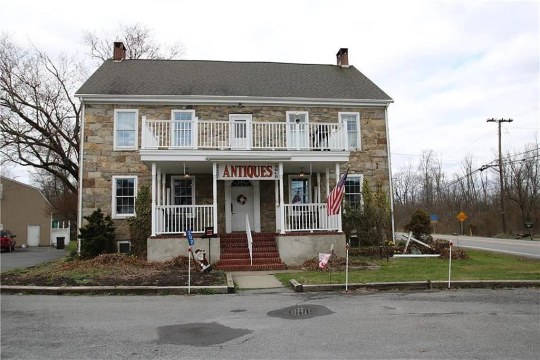
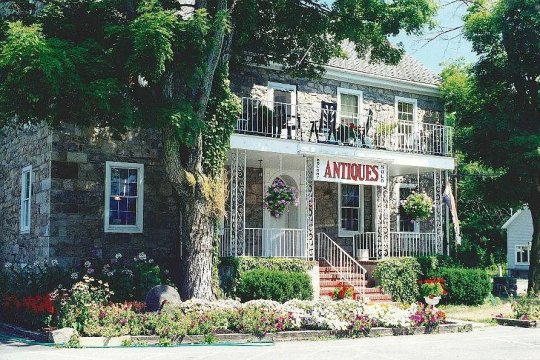
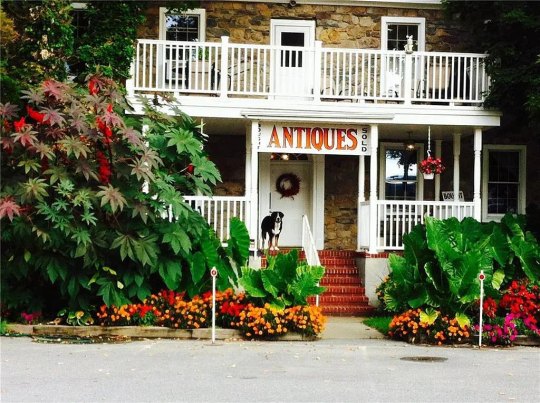
This 1790 home that looks so nice all year long is in Scotia, Pennsylvania and it’s an interesting opportunity. The 1st fl. is an antique shop and the residence is upstairs. Of course, it can be converted back, but the new owner would have to bring the kitchen back downstairs. It has 3bd. 3ba. and is $500K.

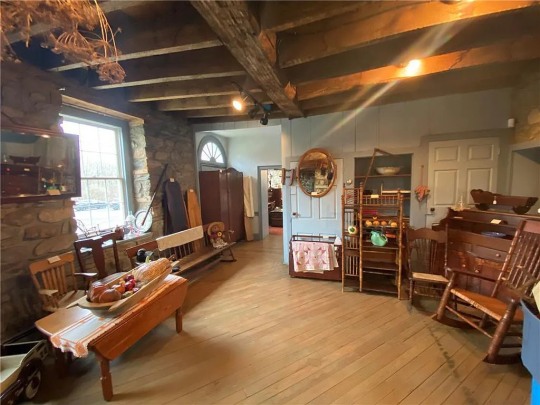
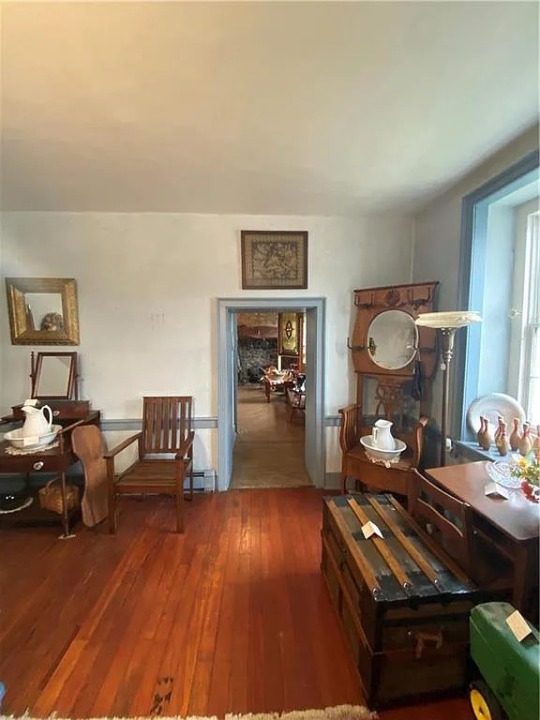

Now, if I bought it, even though my mom had an antique shop, I would want to make this part into a home, b/c it’s such an historic piece of Americana. Look at the those stone fireplaces, beamed ceilings and all the wonderful original features.
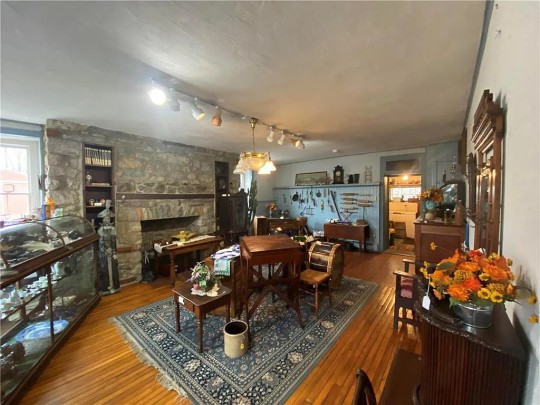

This house has 7 stone fireplaces.
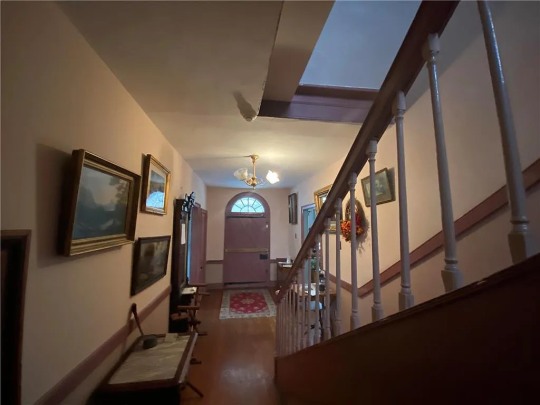

The hall and stairs to both the shop and the apt. I guess the sign says “Private.”

See? I really like the first floor better. There’s big modern kitchen/dining room up here.

There’s another of those stone fireplaces.
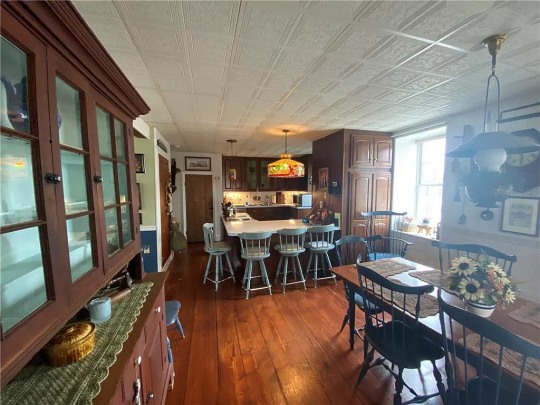
It’s cute up here, but I like the old Colonial look of the 1st floor.
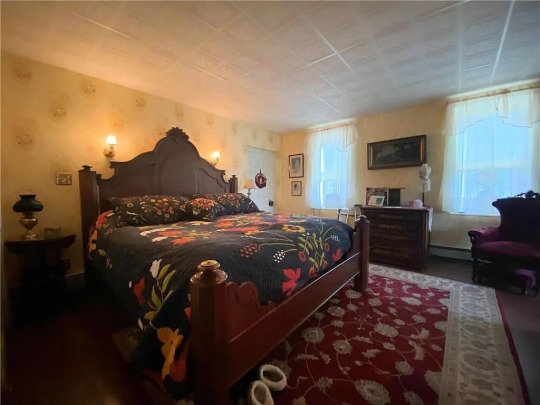

The main bd. is very large.
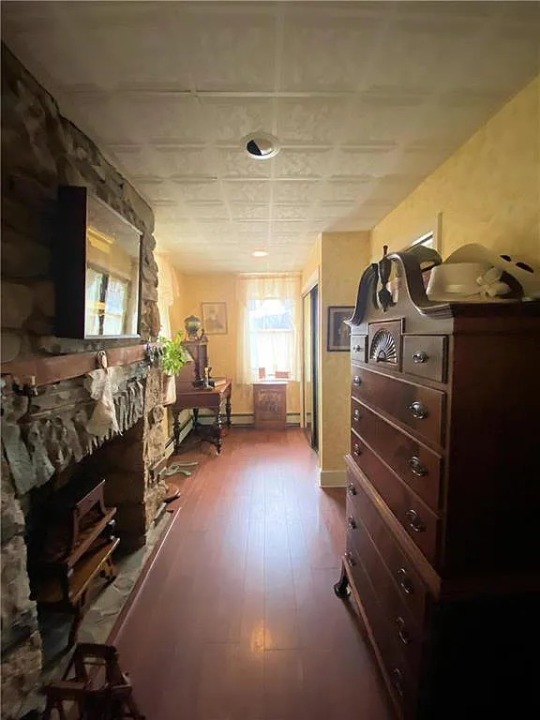
I wonder if they put a wall up here, b/c why would there be a fireplace in a hall?

Maybe they put this bath in.

I don’t know what this is, but they don’t seem to be using it- there’s laundry in here.

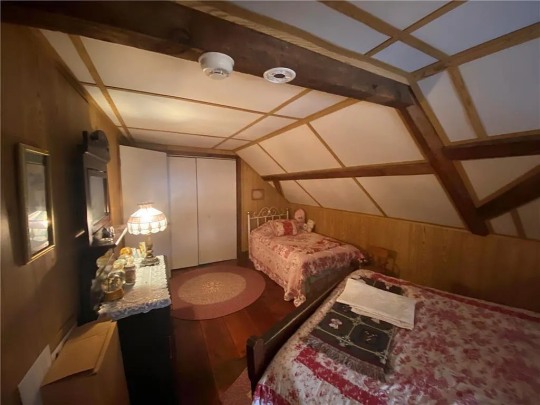
Here’s a nice big attic bd. It’s kind of cozy.
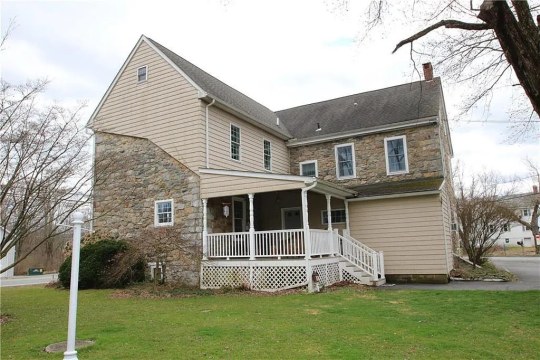
Beautiful porch in the back of the house.


There’s also a garage w/a barn for storage, plus a parking lot.

I would imagine that this above-ground pool conveys b/c it has deck on it.
https://www.zillow.com/homedetails/202-Fenner-Ave-Sciota-PA-18354/2064030148_zpid/
97 notes
·
View notes
Text
The Junk Boys

The Junk Boys is a locally-owned and operated Osceola County Junk Removal business founded by Kurt Baxter and Tanner Beaty. While the company is based in Osceola, we also serve clients in the greater Orlando area.
We clean out spaces such as garages, sheds, houses, apartments, warehouses, barns, retail locations, storage units, and outbuildings. Our specialty is Junk and Debris Removal. We pride ourselves on our ability to take on any project and do it well.
Our customers find our rates to be competitive, our work to be first-class, and our attitudes professional and friendly.
Address:
1790 King James Rd, Kissimmee, FL 34744
Phone:
Phone: (407) 205-9624
Website: www.junkboysusa.com
Junk Removal Company, Junk Removal Services, Full Service Junk Removal, Apartment Junk Removal, Apartment Junk Removal Services, Appliance Removal, Bulk Appliances Removal, Old Appliance Removal, Appliance Removal Services, Furniture Removal, Furniture Removal Services, Junk Hauling, Junk Hauling Services, Post Construction Clean-up, Post Construction Clean up Services, Construction Debris Removal, Debris Removal Services, Construction Debris Removal Services.
1 note
·
View note
Photo

Attributed to Francis Alleyne (fl.1774 - 1790), 'Portrait of a Gentleman, traditional identified as Admiral James Dundas', oil on canvas laid on board, no date (late 1700s), English, unsold for est. 2,000 - 3,000 GBP in Bonham's Old Master Pictures sale, October 2012; London, England.
Bears the inscription [Admiral James Dundas/Died May 1811 at Forge/Canonbie].
#francis alleyne#unknown sitter#known artist#known sitter#oil on canvas#1700s#english#bonhams#london
4 notes
·
View notes
Text
Never Gon'be President Now
read it on the AO3 at https://ift.tt/3gflynn
by Gabriellekong
After all these years, the Democratic-Republicans are still convinced that the Reynolds Pamphlet is used to cover up some scandal and they might be half correct. In fact, it’s a story made up to cover up an affair with another affair. It was summer in 1790, and Alexander’s by himself. We will let him tell it.
Words: 5573, Chapters: 1/?, Language: English
Fandoms: Hamilton - Miranda
Rating: Explicit
Warnings: Creator Chose Not To Use Archive Warnings
Categories: M/M
Characters: Alexander Hamilton, George Washington, Aaron Burr, Thomas Jefferson, James Madison, Elizabeth "Eliza" Schuyler, Maria Reynolds, James Reynolds (fl.1783-1792), Martha Washington, John Laurens
Relationships: Alexander Hamilton/George Washington, Alexander Hamilton/Thomas Jefferson, Aaron Burr/Alexander Hamilton, Thomas Jefferson/James Madison, Alexander Hamilton & James Madison, Alexander Hamilton/Elizabeth "Eliza" Schuyler, Alexander Hamilton/John Laurens, George Washington & Martha Washington
Additional Tags: Friends to Lovers, Anal Sex, Oral Sex, Other Additional Tags to Be Added, Jealousy, Daddy Kink, Slow Burn, Politics
read it on the AO3 at https://ift.tt/3gflynn
3 notes
·
View notes
Text
Never Gon'be President Now
read it on AO3 at https://ift.tt/3gflynn
by Gabriellekong
After all these years, the Democratic-Republicans are still convinced that the Reynolds Pamphlet is used to cover up some scandal and they might be half correct. In fact, it’s a story made up to cover up an affair with another affair. It was summer in 1790, and Alexander’s by himself. We will let him tell it.
Words: 5573, Chapters: 1/?, Language: English
Fandoms: Hamilton - Miranda
Rating: Explicit
Warnings: Creator Chose Not To Use Archive Warnings
Categories: M/M
Characters: Alexander Hamilton, George Washington, Aaron Burr, Thomas Jefferson, James Madison, Elizabeth "Eliza" Schuyler, Maria Reynolds, James Reynolds (fl.1783-1792), Martha Washington, John Laurens
Relationships: Alexander Hamilton/George Washington, Alexander Hamilton/Thomas Jefferson, Aaron Burr/Alexander Hamilton, Thomas Jefferson/James Madison, Alexander Hamilton & James Madison, Alexander Hamilton/Elizabeth "Eliza" Schuyler, Alexander Hamilton/John Laurens, George Washington & Martha Washington
Additional Tags: Friends to Lovers, Anal Sex, Oral Sex, Other Additional Tags to Be Added, Jealousy, Daddy Kink, Slow Burn, Politics
read it on AO3 at https://ift.tt/3gflynn
1 note
·
View note